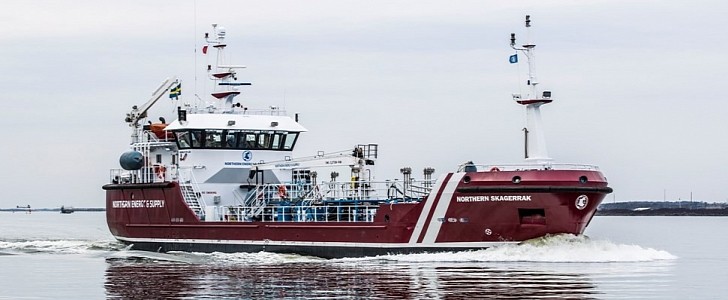Hybrid and electric propulsion for ships can help the environment in more ways than one. Vessels running on clean energy can not only keep the air safer by cutting CO2 emissions, but also keep the water protected by collecting the waste that’s typically discarded by commercial ships into the sea.
Progress regarding alternative propulsion systems for vessels is slow, but steady. It’s going to take a while until international shipping can become totally green, but until then, every step matters. One of them is making sure that no more toxic waste from ships, known as sludge, is discharged into the water. Sweden is a positive example in this regard, with all ports in this country required by law to collect the sludge from all arriving ships.
When at sea, all boats accumulate wastewater, which contains toxic oil residues, solvents, and detergents. In the ideal case, cargo ships leave this wastewater at port, when arriving at the destination, which is then delivered to a purification plant, where the toxic elements are separated from the water. Sweden has already been implementing this step, but now wants to take things further by converting the service ships that collect the sludge to hybrid propulsion.
The Port of Gothenburg, known for being the largest Scandinavian port, will begin operating a hybrid service vessel. The Northern Skagerrak, designed to collect sludge from incoming ships, will be converted to hybrid operation. While it’s set to run mostly on electric power, it will also keep an auxiliary engine using hydrotreated vegetable oil (HVO), a renewable fuel obtained from different kinds of vegetable oil.
According to the Port of Gothenburg, this conversion is estimated to eliminate almost 750 tons (680 tonnes) of CO2 from reaching the atmosphere. This way, the Northern Skagerrak will be benefitting both the air and the water. The service vessel will assist up to 6,000 incoming ships every year. It’s scheduled to begin operations after the conversion will be performed in the second quarter of 2022.
This is another milestone for the largest Scandinavian port, which intends to cut local emissions by 70% by the end of this decade.
When at sea, all boats accumulate wastewater, which contains toxic oil residues, solvents, and detergents. In the ideal case, cargo ships leave this wastewater at port, when arriving at the destination, which is then delivered to a purification plant, where the toxic elements are separated from the water. Sweden has already been implementing this step, but now wants to take things further by converting the service ships that collect the sludge to hybrid propulsion.
The Port of Gothenburg, known for being the largest Scandinavian port, will begin operating a hybrid service vessel. The Northern Skagerrak, designed to collect sludge from incoming ships, will be converted to hybrid operation. While it’s set to run mostly on electric power, it will also keep an auxiliary engine using hydrotreated vegetable oil (HVO), a renewable fuel obtained from different kinds of vegetable oil.
According to the Port of Gothenburg, this conversion is estimated to eliminate almost 750 tons (680 tonnes) of CO2 from reaching the atmosphere. This way, the Northern Skagerrak will be benefitting both the air and the water. The service vessel will assist up to 6,000 incoming ships every year. It’s scheduled to begin operations after the conversion will be performed in the second quarter of 2022.
This is another milestone for the largest Scandinavian port, which intends to cut local emissions by 70% by the end of this decade.








